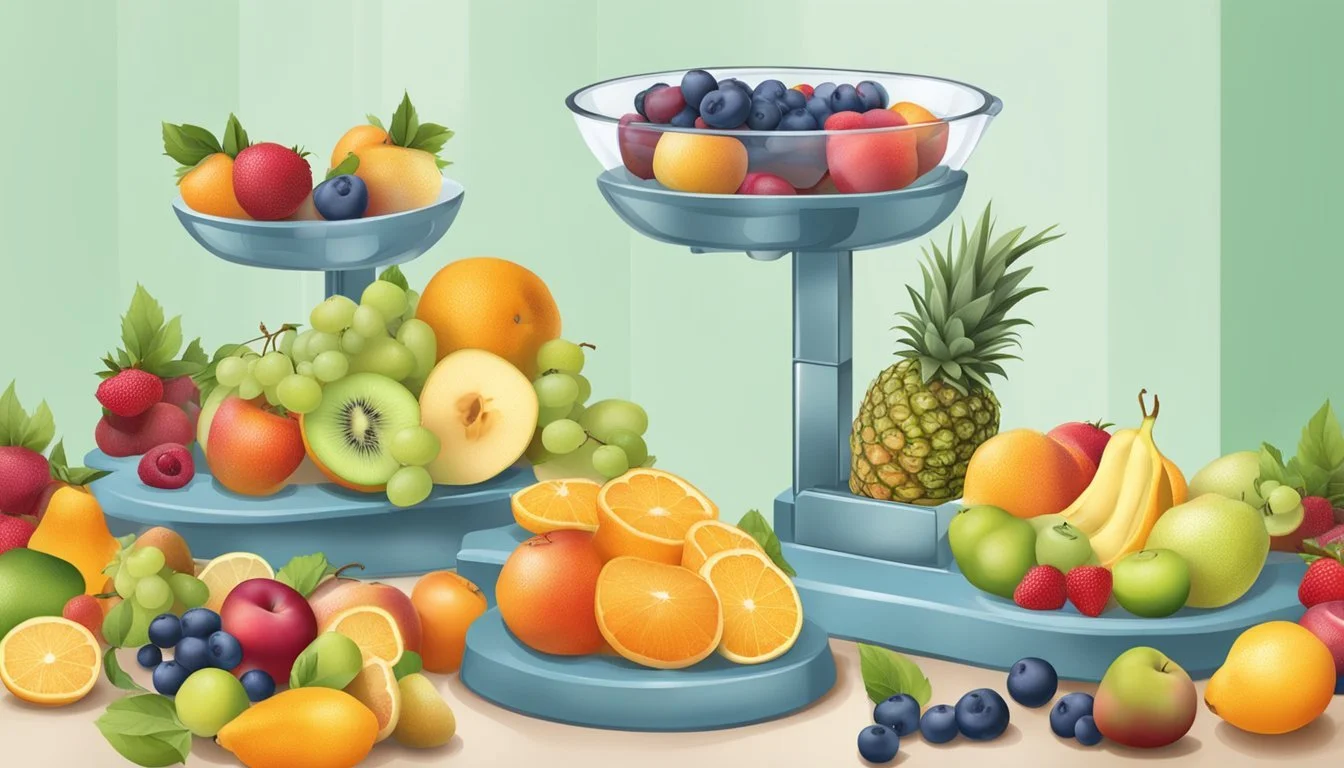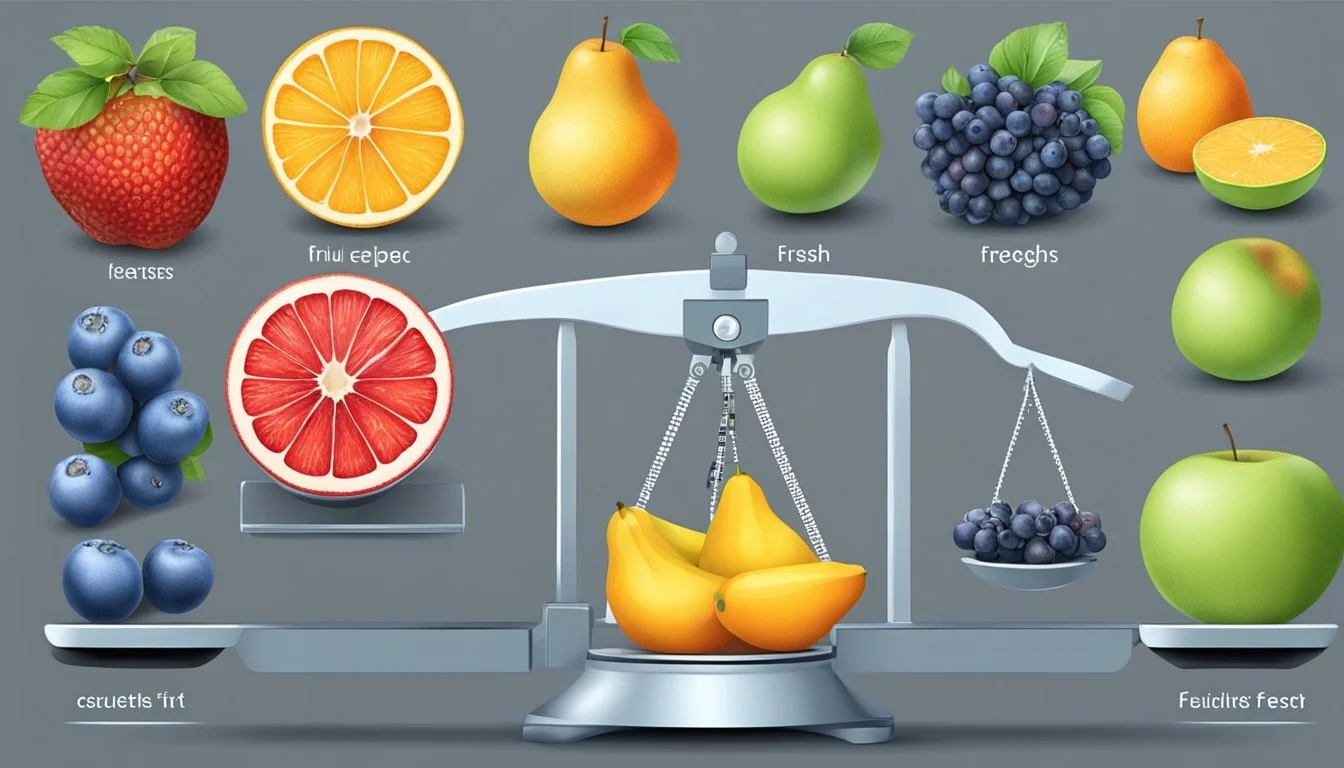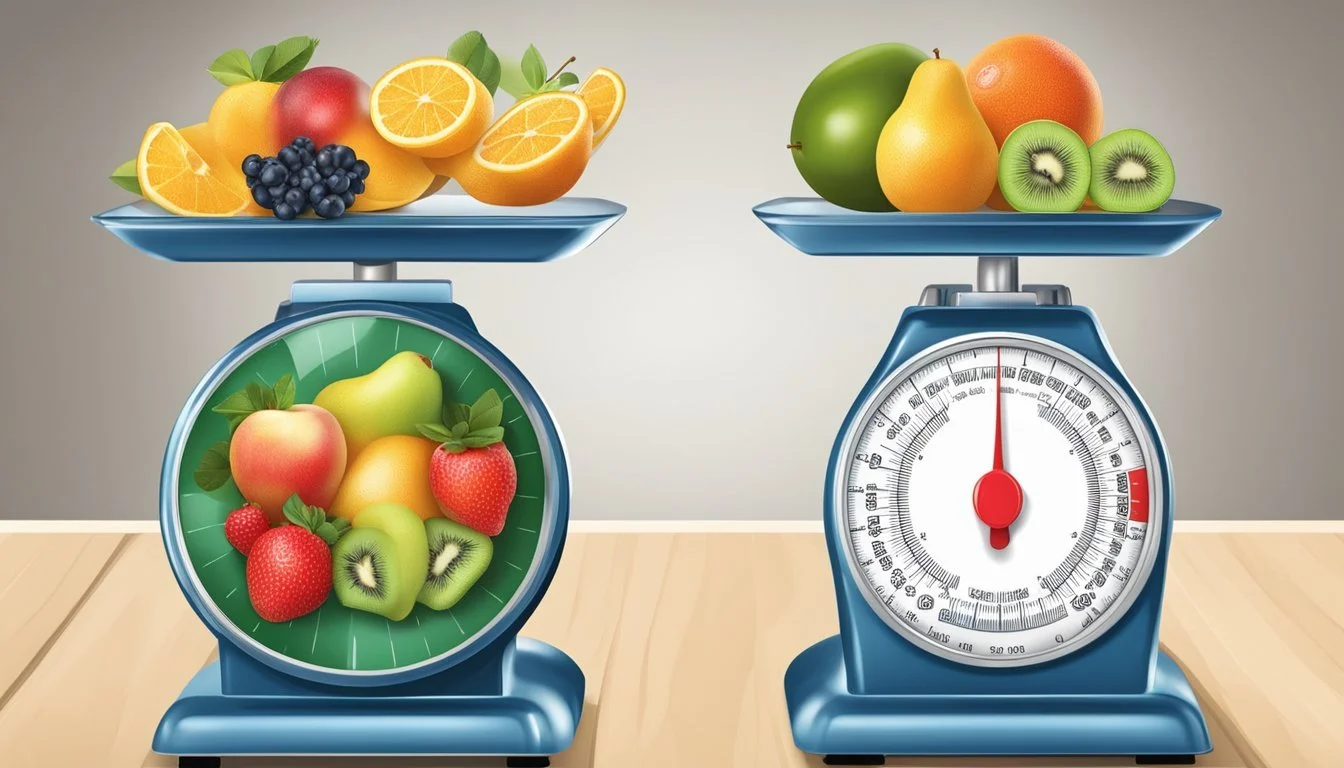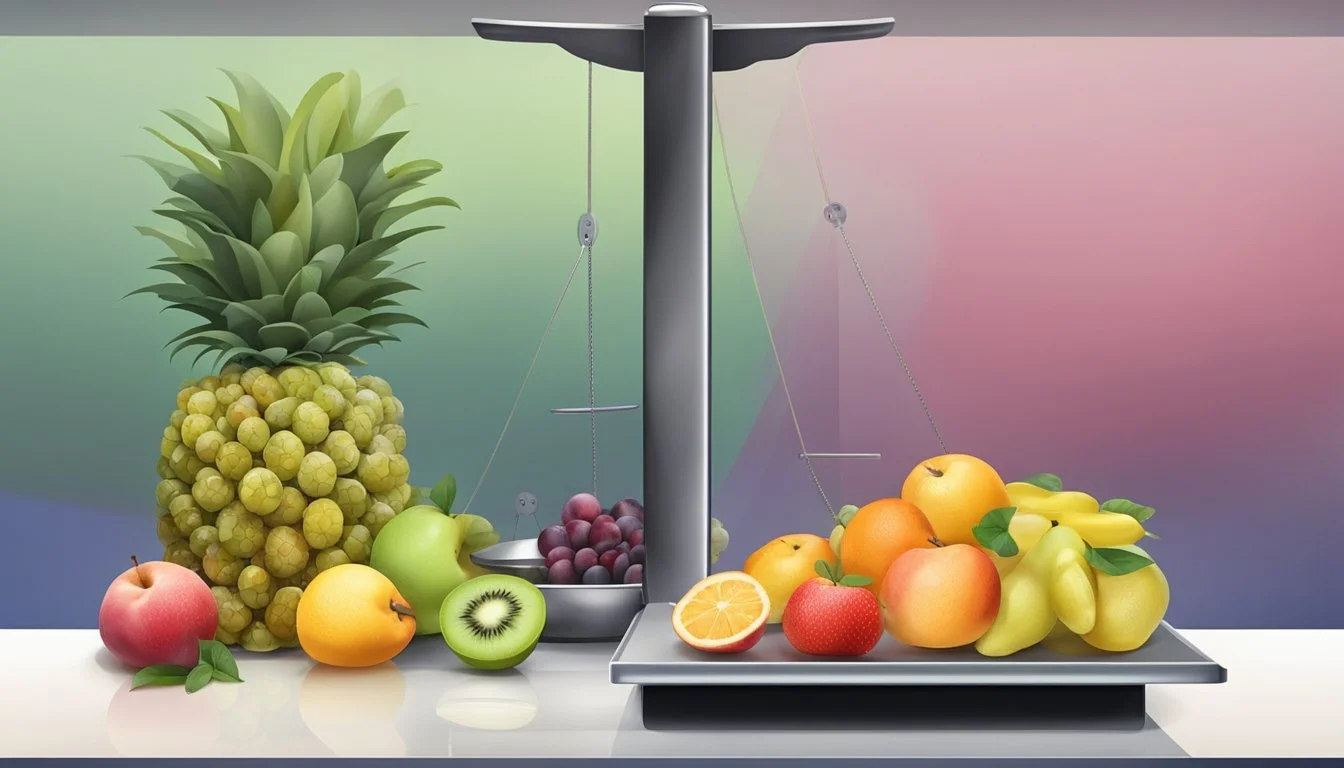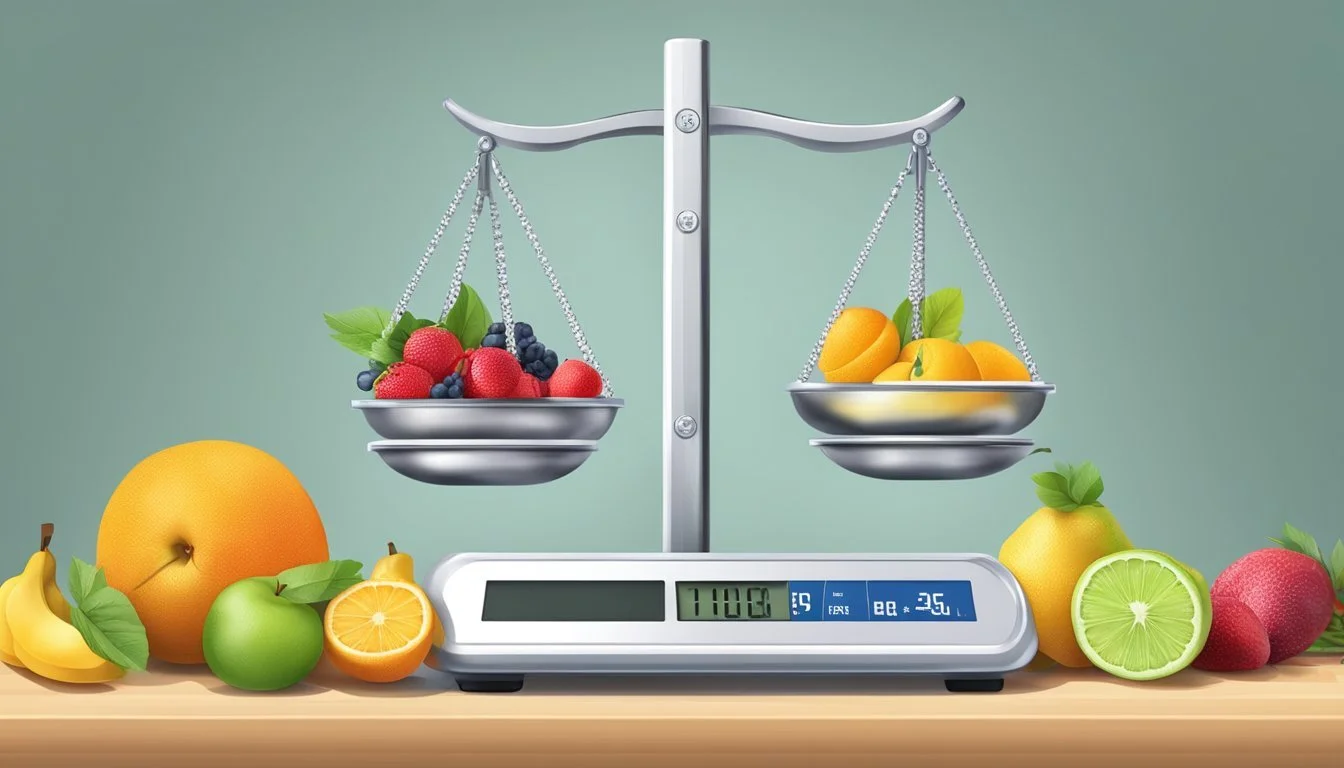Frozen vs Fresh Fruit Weight: Understanding the Difference
Frozen and fresh fruits both offer nutritional benefits, but their weights can differ due to processing methods. Fresh fruits generally contain more water, which contributes to their weight. Frozen fruits are often picked at peak ripeness and flash-frozen, preserving their nutrients while reducing water content.
Frozen fruits typically weigh less than their fresh counterparts due to water loss during the freezing process. This concentration effect can actually increase the nutrient density per weight in some frozen fruits. For example, frozen berries may contain more antioxidants by weight compared to fresh berries.
The choice between frozen and fresh fruits often comes down to convenience, availability, and intended use. Frozen fruits are excellent for smoothies and baking, while fresh fruits are ideal for immediate consumption. Both options can contribute to a healthy diet and provide essential vitamins, minerals, and fiber.
Nutritional Comparison
Frozen and fresh fruits differ in their nutritional profiles due to processing methods and storage times. These differences impact vitamin content, sugar levels, and overall nutritional value.
Vitamins and Minerals Content
Frozen fruits often retain higher levels of certain vitamins and minerals compared to fresh fruits. Vitamin C content in frozen fruits can be significantly higher, sometimes up to 3370% more than fresh varieties. This is because freezing locks in nutrients at their peak ripeness.
Antioxidants like beta-carotene are also more abundant in frozen fruits. Studies show frozen apricots contain 35% more beta-carotene than fresh ones. Polyphenols, beneficial plant compounds, are found in greater quantities in frozen fruits as well.
Iron and calcium levels remain relatively stable in both frozen and fresh fruits. Folate content may decrease slightly during the freezing process.
Added Sugars and Preservatives
Fresh fruits naturally contain no added sugars or preservatives. Some frozen fruits, however, may have added sugars or syrups to enhance flavor or texture.
Frozen fruit packages should be checked for ingredient lists. Look for products without added sugars or preservatives to maintain nutritional integrity.
Plain frozen fruits typically contain no additives. Fruit blends or pre-sweetened varieties might include extra sugars or preservatives.
Effects of Processing on Nutritional Value
The blanching process, used before freezing, can cause slight nutrient loss. This brief heat treatment inactivates enzymes that would otherwise degrade fruit quality.
Freezing itself preserves most nutrients effectively. Flash-freezing techniques minimize ice crystal formation, helping maintain fruit structure and nutritional value.
Storage time affects nutrient content in both fresh and frozen fruits. Fresh fruits may lose vitamins during transport and shelf storage. Frozen fruits experience slower nutrient degradation but can lose some vitamin C and polyphenols over months of freezer storage.
Fiber content remains largely unchanged in frozen fruits compared to fresh. The freezing process does not significantly impact this important nutrient.
Weight and Volume Considerations
Comparing frozen and fresh fruits involves examining differences in water content, weight, and density. These factors impact serving sizes and nutritional value.
Water Content Difference
Frozen fruits typically contain more water than their fresh counterparts. During the freezing process, ice crystals form within the fruit's cellular structure. This can lead to a higher overall water content once thawed.
Fresh fruits naturally lose moisture over time through evaporation. This process accelerates after harvesting, potentially resulting in slightly lower water content compared to frozen options.
The increased water in frozen fruits can affect their weight and volume when measured. A cup of thawed frozen strawberries may weigh more than a cup of fresh strawberries due to this additional water content.
Serving Size and Density
Frozen fruits often have a different density compared to fresh fruits. This difference can impact serving sizes and portion control for weight management.
Fresh fruits maintain their original cellular structure, resulting in a consistent density. Frozen fruits may become more compact during the freezing process, leading to a higher density per volume.
A standard serving of frozen fruit might provide more actual fruit content than the same volume of fresh fruit. For example, a cup of frozen blueberries could contain more individual berries than a cup of fresh blueberries.
When measuring by weight, frozen and fresh fruits may have similar nutritional profiles. However, volumetric measurements can lead to variations in calorie and nutrient intake between the two forms.
Impact on Health
Frozen and fresh fruits offer distinct health benefits related to disease prevention and digestive processes. Both forms provide essential nutrients that can positively influence overall well-being.
Disease Prevention
Fruits, whether frozen or fresh, contain vital compounds that help reduce the risk of chronic diseases. Antioxidants in fruits combat free radicals, potentially lowering cancer risk.
Regular fruit consumption is linked to decreased heart disease and stroke incidence. The high fiber content in fruits aids in maintaining healthy blood pressure levels.
Frozen fruits retain most of their nutritional value, often preserving vitamins and minerals better than fresh fruits stored for extended periods. This preservation can ensure a steady intake of health-promoting compounds year-round.
Digestion and Metabolic Activity
Fruits play a crucial role in supporting digestive health and metabolic functions. The fiber in fruits promotes regular bowel movements and helps maintain a healthy gut microbiome.
Fresh fruits typically have a higher water content, which can aid in hydration and support overall digestive processes. Frozen fruits, when thawed, may have a slightly altered texture but still provide beneficial fiber.
Both forms of fruit contribute to metabolic health by providing essential vitamins and minerals. These nutrients support various bodily functions, including energy production and nutrient absorption.
Culinary Uses and Texture
Frozen and fresh fruits offer distinct advantages in cooking and baking. Their textures and flavors impact various dishes differently, influencing preparation methods and final results.
Cooking and Preparation
Frozen fruits excel in smoothies, providing instant chilling and thickening. They're ideal for baked goods with longer cooking times, like pies and cobblers. Fresh fruits shine in raw applications such as salads and garnishes. When cooking with frozen fruit, allow extra time for thawing or adjust recipes to account for added moisture.
Frozen raspberries work well in sauces and jams, maintaining their shape better than fresh. Fresh berries are preferable for tarts and decorative uses. In general, frozen fruits are pre-cut and convenient for quick use, reducing food waste.
Taste and Ripeness Considerations
Fresh fruits offer peak flavor when perfectly ripe, but their quality can vary seasonally. Frozen fruits are picked at optimal ripeness and flash-frozen, preserving nutrients and taste. They provide consistent flavor year-round, making them reliable for recipes.
Texture differences are notable. Fresh fruits have a crisp, juicy texture ideal for raw consumption. Frozen fruits can become softer upon thawing, which works well in cooked dishes but may not suit fresh applications.
For baking, frozen fruits can sometimes yield better results, especially when fresh alternatives are underripe or out of season. They release less juice during cooking, helping maintain the structure of pies and muffins.
Convenience and Availability
Frozen and fresh fruits offer different advantages in terms of convenience and availability. Storage methods and seasonal factors play key roles in determining which option may be preferable.
Storage and Shelf Life
Frozen fruits have a significantly longer shelf life compared to fresh fruits. They can be stored in the freezer for months without losing quality or nutritional value. This extended storage capability makes frozen fruits a convenient option for those who shop less frequently or want to stock up.
Fresh fruits, while delicious, have a shorter shelf life. They typically need to be consumed within days or weeks of purchase, depending on the type of fruit. Proper storage in the refrigerator can help extend their lifespan, but it's still limited compared to frozen options.
Year-Round and Seasonal Availability
Frozen fruits provide year-round availability, regardless of the growing season. This consistency allows consumers to enjoy their favorite fruits at any time, even when they're not in season locally. It's particularly beneficial for those who live in areas with limited access to fresh produce.
Fresh fruits are often subject to seasonal availability. While this can mean higher quality and better taste during peak seasons, it also limits options during off-seasons. Some fresh fruits may be imported from other regions, but this can impact their freshness and cost.
Seasonal eating with fresh fruits can be exciting, offering variety throughout the year. However, frozen fruits provide a reliable alternative when certain fresh options aren't available or are too expensive out of season.
Cost and Affordability
Price plays a significant role when choosing between frozen and fresh fruit. Several factors influence the cost, making each option more economical in different circumstances.
Price Comparisons
Frozen fruit often costs less than fresh, especially when the fruit is out of season. A 10-ounce bag of frozen organic raspberries typically matches the price of 6 ounces of fresh raspberries. Frozen organic spinach is usually about 50 cents cheaper than its fresh counterpart for twice the volume.
In-season fresh fruit can be more affordable due to local availability and reduced transportation costs. However, prices fluctuate based on supply and demand.
Factors Affecting Price
Seasonality greatly impacts fruit prices. Fresh fruit tends to be cheaper when harvested locally and in-season. Transportation costs for out-of-season fresh fruit can drive up prices significantly.
Processing and storage affect frozen fruit costs. While freezing extends shelf life, it requires energy for processing and cold storage. This can increase the overall cost.
Organic options, whether fresh or frozen, generally come with a higher price tag due to certification requirements and lower crop yields. However, frozen organic fruit can be more cost-effective than fresh organic alternatives, especially when out of season.
Safety and Food Quality
Frozen and fresh fruits have distinct safety and quality considerations. Proper handling and storage are crucial for both types to maintain nutritional value and prevent contamination.
Risk of Contaminants
Frozen fruits undergo blanching before freezing, which helps eliminate harmful bacteria. This process reduces the risk of foodborne illnesses. Fresh fruits, if not properly washed, may harbor contaminants from handling or the environment. Freezing halts bacterial growth, making frozen fruits generally safe for long-term storage. However, thawing and refreezing can lead to quality degradation and potential safety issues.
Freshly harvested fruits are susceptible to rapid spoilage if not stored correctly. Refrigeration slows decay but doesn't eliminate all risks. Proper washing of fresh fruits is essential to remove surface contaminants.
Quality Preservation
Freezing preserves fruit quality by slowing enzyme activity that causes spoilage. Frozen fruits can maintain their nutritional value and flavor for 8 to 12 months when stored at 0°F (-18°C) or below.
Fresh fruits typically have a shorter shelf life. Their quality degrades faster due to continued ripening and enzyme activity. Proper storage in the refrigerator can extend freshness for days to weeks, depending on the fruit type.
Blanching before freezing helps preserve color, texture, and nutrients in fruits. This process inactivates enzymes that cause browning and flavor changes. Fresh fruits retain their original texture but may lose vitamins over time, especially if exposed to air, light, or heat.
Consumer Insights
Consumer behavior around frozen and fresh fruit has shifted in recent years. Purchasing trends reveal changing preferences, while labels and certifications play an important role in decision-making.
Purchasing Trends
Convenience drives many consumers toward frozen fruit options. Longer shelf life and ease of use make frozen fruits appealing for smoothies, baking, and snacking. Seasonal availability also impacts purchasing, with frozen varieties offering year-round access to out-of-season fruits.
Fresh fruit remains popular for immediate consumption and visual appeal. However, concerns about food waste have led some consumers to opt for frozen to reduce spoilage.
Price fluctuations affect buying habits. When fresh fruit prices spike, shoppers often turn to frozen alternatives. Bulk purchases of frozen fruit have become more common, especially among families and health-conscious consumers.
Labels and Certifications
Consumers increasingly scrutinize labels when choosing between fresh and frozen fruit. "No added sugars" claims on frozen fruit packages appeal to health-conscious buyers. Organic certifications influence purchasing decisions for both fresh and frozen options.
Country of origin labeling impacts choices, with many preferring domestically grown fruit. Some frozen fruit brands highlight their flash-freezing processes on packaging to emphasize freshness and nutrient retention.
"Non-GMO" and "preservative-free" labels attract consumers concerned about additives. Sustainability certifications are gaining importance, with shoppers considering environmental impact in their fruit choices.
Environmental Impact
The environmental impact of frozen versus fresh fruit varies depending on several factors. Freezing fruit can help reduce food waste, as it extends shelf life significantly compared to fresh produce.
Transportation is a key consideration. Fresh fruit often requires rapid shipping over long distances, which can increase carbon emissions. Frozen fruit may have a lower transportation footprint in some cases.
Energy use for freezing and cold storage must be accounted for with frozen fruit. However, this can be offset by reduced spoilage and waste throughout the supply chain.
Packaging differences also play a role. Fresh fruit typically uses less packaging, while frozen fruit requires plastic bags or boxes for protection during storage and transport.
Seasonality impacts the equation. Out-of-season fresh fruit flown from distant locations may have a higher carbon footprint than locally-frozen seasonal produce.
Some key environmental factors to consider:
Food waste reduction
Transportation emissions
Energy for freezing/storage
Packaging materials
Seasonal availability
The most sustainable choice often depends on specific circumstances like origin, storage time, and consumption patterns. Consumers can minimize environmental impact by selecting locally-grown produce when in season and opting for frozen alternatives at other times.
The Bottom Line
Fresh and frozen fruits both offer nutritional benefits. Frozen fruits retain most nutrients and can be more convenient and affordable. They're picked at peak ripeness and quickly frozen, preserving vitamins and minerals.
Fresh fruits provide slightly higher levels of some vitamins like vitamin C. They also offer better texture and flavor for eating raw. However, fresh fruits may lose nutrients during transport and storage.
For weight comparisons, frozen fruits often come pre-portioned. This can help with portion control. Fresh fruits vary more in size and weight.
Ultimately, both fresh and frozen fruits are healthy choices. The best option depends on personal preferences, budget, and intended use. Including a variety of both in your diet ensures you get a range of nutrients year-round.
Key points to remember:
• Frozen fruits are nutritionally similar to fresh • Fresh fruits may have slightly higher vitamin C • Frozen fruits are convenient and have a longer shelf life • Both contribute to a healthy, balanced diet

